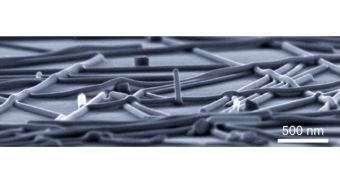A team of engineers and physicists at the Stanford University announce the development of a new technique for welding together crisscrossing meshes of metal nanowires. The group says that shining beams of light on the edges of the diminutive structures is enough to glue them together.
According to scientists, there are currently countless potential applications that could require the use of meshes made up of very tiny wires. However, one of the most severe limitations to employing these materials is the fact that they cannot be pieced together in larger structures.
Over the years, experts have tried to come up with a way of welding sheets of interweaving nanowires, but all efforts have thus far been in vain. Now, by harnessing the power of plasmonics, the Stanford team was able to produce an approach that only requires the presence of light.
Innovative electronics and solar applications are just some of the improvements that the new work could bring about. The nanowire meshes are essential for future technologies because they were developed from the get-go to exhibit electrical conductivity.
This makes them extremely promising for new generations of devices, including touchscreens, video displays, light-emitting diodes (LED) and thin-film solar cells. But scientists can only take advantage of this exceptional electrical throughput if they can bring the meshes together.
Thus far, welding could only be achieved through heating the meshes and then pressing them together, a process that damaged their inner structures, sometime irreparably. Now, a simple blast of light is sufficient to fuse the ends of nanowire meshes to each other.
Details of how the approach works were published in the latest issue of the top scientific journal Nature Materials. The technique relies heavily on plasmonics, a type of interaction that occurs when light touches metal, and then creates surface waves that travel for prolonged distances.
“When two nanowires lay criss-crossed, we know that light will generate plasmon waves at the place where the two nanowires meet, creating a hot spot. The beauty is that the hot spots exist only when the nanowires touch, not after they have fused,” investigator Mark Brongersma explains.
“The welding stops itself. It's self-limiting,” adds Brongersma, one of the senior author on the new study, and also an associate professor of materials science and engineering at Stanford.

 14 DAY TRIAL //
14 DAY TRIAL //